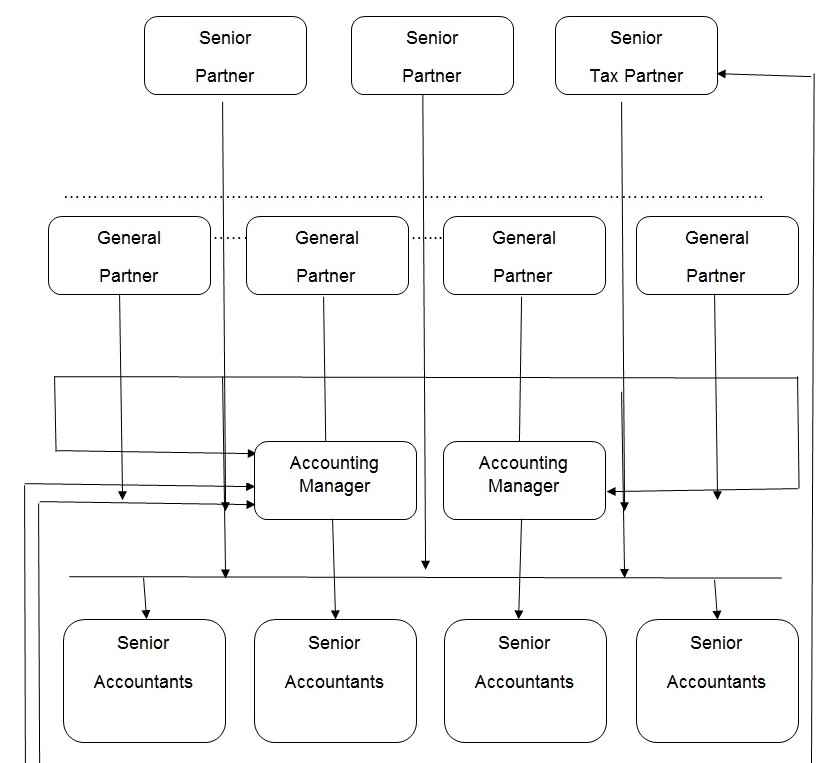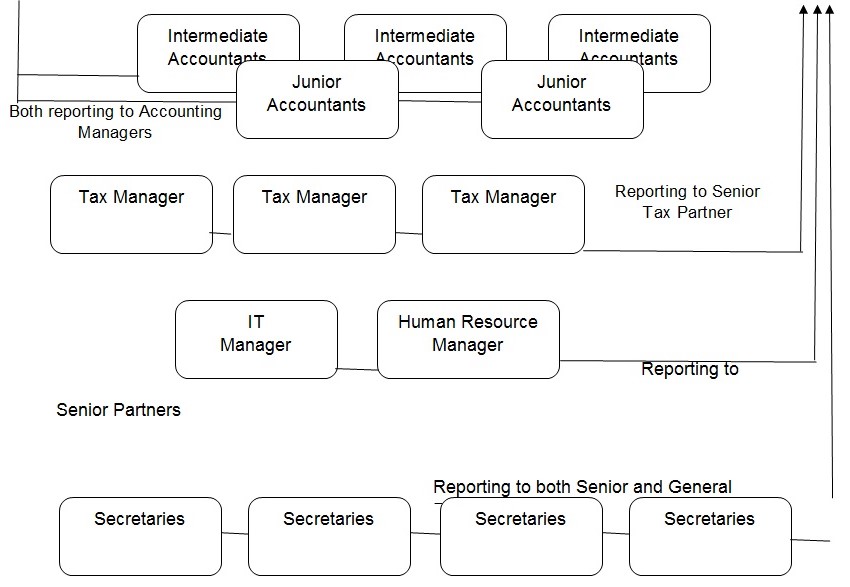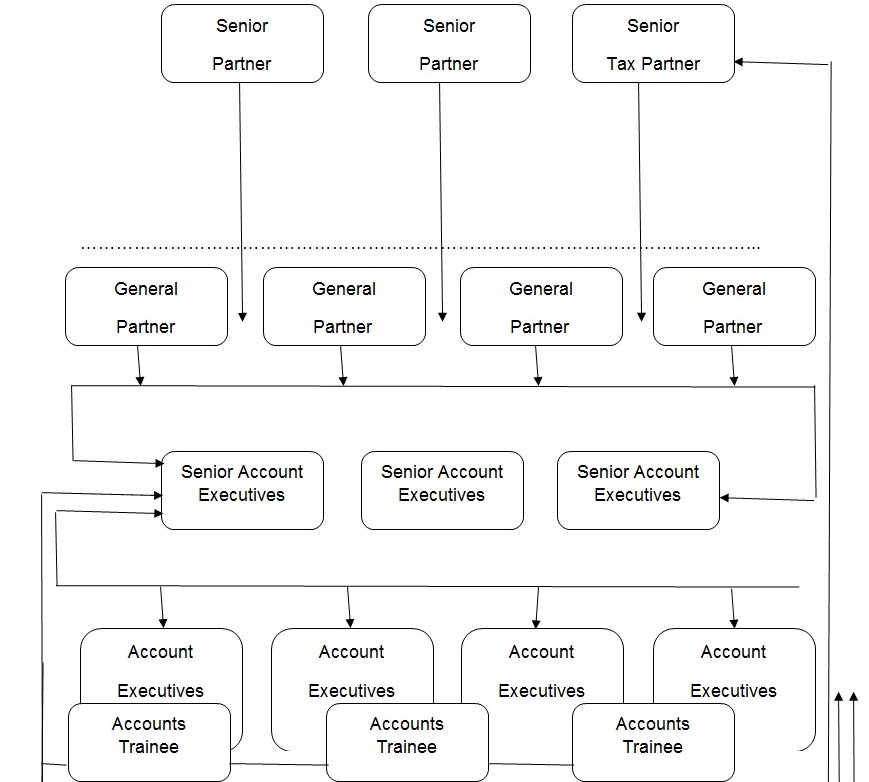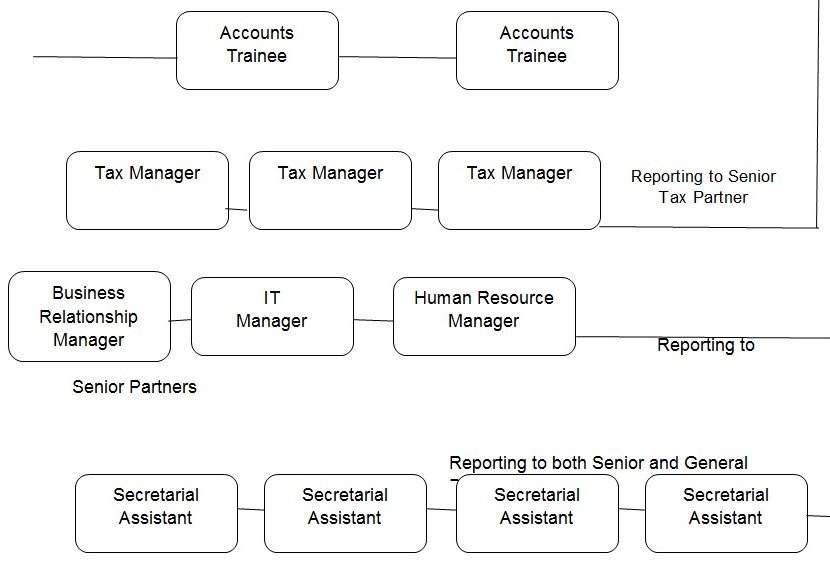Introduction
Management is directly responsible for the creation, maintenance and attainment of synergy among all of its employees, especially when the organization is maintaining a decentralized structure of communication and reporting. While, Organizing is all about maintaining the internal organizational structure of the business using the dedicated focused contents towards division, coordination, controlling and the information flow to be roamed around within the organization. Underlining the job responsibility specific for its distribution is considered by managers to make the job contents available down the line whereas job authority restricts to job holders in this function of management.
Apart from formal structure formation, there also exists an informal structure as well. This basically forms a buzz of employees and has a wide scope which is extremely difficult for management to control over. In the case discussed here there lies a positive informal structure at every level including the ability to quickly wide spread information contents and processing it to a meaningful information generating feedback (Williams, Kondra and Vibert, 26). Whereas, the case of Alicia was much different from others and followed an informal structure in some sense when management tends to get information from her about others upraising her social needs on the same side.
Current Scenario
In today’s era success lies in their change adaptability and their responding patterns according to the changes taking place in the marketplace. Organizational design is very much important and critically involved even more destructive businesses because just wrong organizational design the whole strategy and action in process gets at stake, employee demonization rises and thus would not be able to satisfy customers in the end (Chowdry, 53). With right and low level of hierarchy in the organization, there will have more energetic and charismatic employees who would take several options for cross-selling and making their work real demanding, through an inside information sharing environment, then highly satisfying customers, all combined to add value to the operating businesses.
Organizational Hierarchy Requirements
Identifying various tasks and functions that particularly help to achieve the goals and objectives in a certainly assigned time period, would rely heavily on the optimal and utmost arrangement of resources to achieve functional effectiveness. Not only has this it also required the size restriction as well for any basic organizational unit. Since synergy creation is the most important and successful requirement for allocating resources within basic units. These resources must be resulting as those that need to be in close proximity to each other in order to create and maintain synergy level.
People with complementary skills are required an allocation with the same work group if they are working and judged for their performance on the same project with similar abilities, similarly assigned tasks and working patterns and in the manner how that work is designed and completed.
Organizational Chart and Hierarchy


Reorganizing the job authorities and responsibilities
Reorganizing needs to be done once in every three years for large and complex structure organizations and once in five years for lowered hierarchy leveled organizations. It should be notified that at many instance organization redesign is attempted to overcome several technical issues being faced with less attention being paid to the most important part of coordination and communication barriers, processes and relationships lying in between the low level management to the top management. Human resource management is also a critical issue to be faced side by side with the evidence and suggestions reported due to structure and systems must be associated in the same way as change in organizational culture and behavior. Still yet we knowledge about the potential needed to manage frequent redesigning patterns to be lined up for organizational design.
Challenging and competitive environment
Organization facing performance challenge should keep in their hearts and minds that they have to cope with the challenge of continuous improvement prevailing in the business industry and competition is at its hype. Still companies lack and fail to take advantage from the benefits of that change environment (Chowdry, 63). Many times we tend to hear a buzz around how this company is making so much profits and how this has created a strong relationship bond among its employees that everyone is so self-organized and consistent at their work generating maximum value for the business.
Same here also is the case of this particular accounting firm which is still reluctant to adopt certain changes and wants the work structure based on both computerized and traditional structures such as functional or divisional forms of organization. Because it has been reported that the skills and competencies regarding the ‘how’ of its employees are as equally important as the acquaintance of ‘what’ organization tends to do in future, introducing some assistance of tools in decisions making for the nature of organizational design.
In this accounting firm there are also some practical tools introduced for the forthcoming organizing process. Because now it is the world of quick decisions and suggestions accompanied by the tools to make that work faster. Knowledge about organizational insights is keen to be delivered for business performance improvements and further future knowledge development. In this particular case also employees need to be acquainted more about managing the internal capabilities and processes that leads to further recognition of discrimination between success and failure factors prevailing in organization.
Measuring performance levels
Here we should also consider the performance level undermining where capabilities are judged on performing and managing repeated changes, doing repeated tasks, is one of the major critical issues surviving in businesses. Quality of work depends upon a rich person to person communication medium. People do not need to be in the same workgroup because of the repetitive and routine nature of the interaction (Williams, Kondra and Vibert, 86). Thus the outcome of the work lies on the work quality depending upon repetitive and one-way communication.
Whereas, not only this, physical interactions are also kept in focus when individuals are assigned to the same workgroup and considering the degree of cooperation between employees which seems critically intense and their work is physically dependent upon each other, then it would be more critical if the employee is being supervised by the same manager. Because then eventually employees in contact have to live and work in coordination with each other no matter what personal and judgmental relationship they have so it is better to understand each other’s requirements for work in order to have a peaceful working environment. Similarly, frequency of interaction among individuals needs to be allocated by keeping in mind the content of interactions and limitations faced in the going pattern.
Redesigned Organizational Chart and hierarchy allocation


Reorganizing descriptions
While reorganizing the current structure prevailing in the local accounting firm there are some positions redesigned in terms of their job positions and titles allocated with their work as well as the job description given to them. Here what is done is just given some level of superiority by giving your accountants a high level of motivation and developing their self esteem. The position of two account managers is replaced by three senior account executives who would be working and reporting in the same pattern as before. Next comes in the hierarchy four account executives who would be reporting to senior account executives particularly as specified the orders received by a significant person handling each case and would not report directly to general partners in the organization. Down the line removing the positions of intermediate and junior accountants there would be five accounts trainee hired to work below account executives whereas they would also have an ease of communication access with senior account executives also. Other than this the whole structure remains the same just there would be a slight change by hiring one person on the post of Business Relationship Manager, who will be responsible to maintain relationship with the overall clientele of the organization and will be looking individually on the satisfaction requirements of the clientele, will report directly to senior partners accompanied with IT and Human Resource Manager.
These suggestions are made just in order to keep hype in motivation level of middle and lower level accountants just by giving their more creative and more respected job titles that can make them feel superior when they are telling their positions to others and that hype in employee motivation would definitely work in a positive way. For example, like junior and intermediate accountants will be recognized as they especially hired as accounts trainee in the organization. Else accounting mangers will get a switch to a job title of holding executive positions.
Competing with the challenging environment
It is obvious and clear enough that in order to deliver persistent performance in the fast pace of 21st century it requires new concepts new thinking patterns and adaptable changes in organizational structures. The first and foremost thing is to keep the focus on principle about organization considering it as an active and continual improvement segment not just as a timely and an end-state contractual project, but this is the thing which should be notified as a repeated process organizing from time to time. Next concept applies here as the management of organizational design that must be seen effectively and cohesively incorporates the hard fundamentals of organizational structure formation and coordination with issues solvency essentially relating their solutions to lie in accordance with their culture and behavior (Chowdry, 36).
Analyzing the views and experiences and practical implications laid by business leaders and HR professionals for companies in the business with different categorical placements such as household-name companies, as well as particularly the organizations in the public and non profitable sectors, the focus should be on what ways to be carried forward while managing the listed repeated changes in the organization and the course of action and practices and procedures that are required to successfully deliver value-added outcomes from changes in organizational design. In a fast pace environment, organizational designs comes in a traditional view. There is limited list of organizations, enterprises, who can manage to pay for organizational change as per their future requirements of personnel in order to move from one standing structure to another.
What matters in Organization and its Organizing?
Here comes the elaboration of the dynamic term organizing, which terms as being on familiar terms with the vibrant nature of the process or procedures of change. Organization’s competency level would be recognized as a more lasting source of impact leaving behind highly advantageous impact than the unique and distinctive characteristics of a significantly particular organizational design.
Organization Management, managing your workforce
During a Reorganization timeframe, it is critical to look at the goals and objectives on priority basis because if you overlook a single attempt you would be definitely losing a potential customer (Williams, Kondra and Vibert, 63). It is one of the most complex tasks in the planning process that respects the suggestions and decisions of various departments and stakeholders, once all the decisions are finalized and taken to board for further implications. This not only limits to goals and objectives it also involves employee changes as well. Their hiring and firing processes, costs and training consideration, appraisals and promotions, position allocation for giving out job titles and projects assignments, or an inside lateral move of employees across departments
Conclusion
Reorganizing also helps to make employees aware of new technological improvements in the industry with latest and training equipped methods and procedures, doing work in an automated environment, whereby there would be an accessed help from the saved data in their software. Once changes have been discussed and approved, they can be action back to your system even employees can move across departments with that. During reorganization, we need to make sure that every employee is accounted for and withheld in a reporting relationship to understand multiple tasks and projects that the company is going through at that time and these felt as a consideration when planning reorganization. All employees should be considered as a unified view of the workforce. Because reorganizing is never done in isolation, there are many working platforms for professionals and other stakeholders of a particular company to work independently. Collaboration is the essential thing which should be done in notice to everyone, make changes whatever is needed in real-time, and that needs a definite sharing with your stakeholders in a secure environment.
Word Cited Page
Chowdry, Subir., Management 21C. Financial Times Prentice Hall, 2003.
Williams, Kondra and Vibert., Management.Second Canadian Ed., Nelson, 2008
